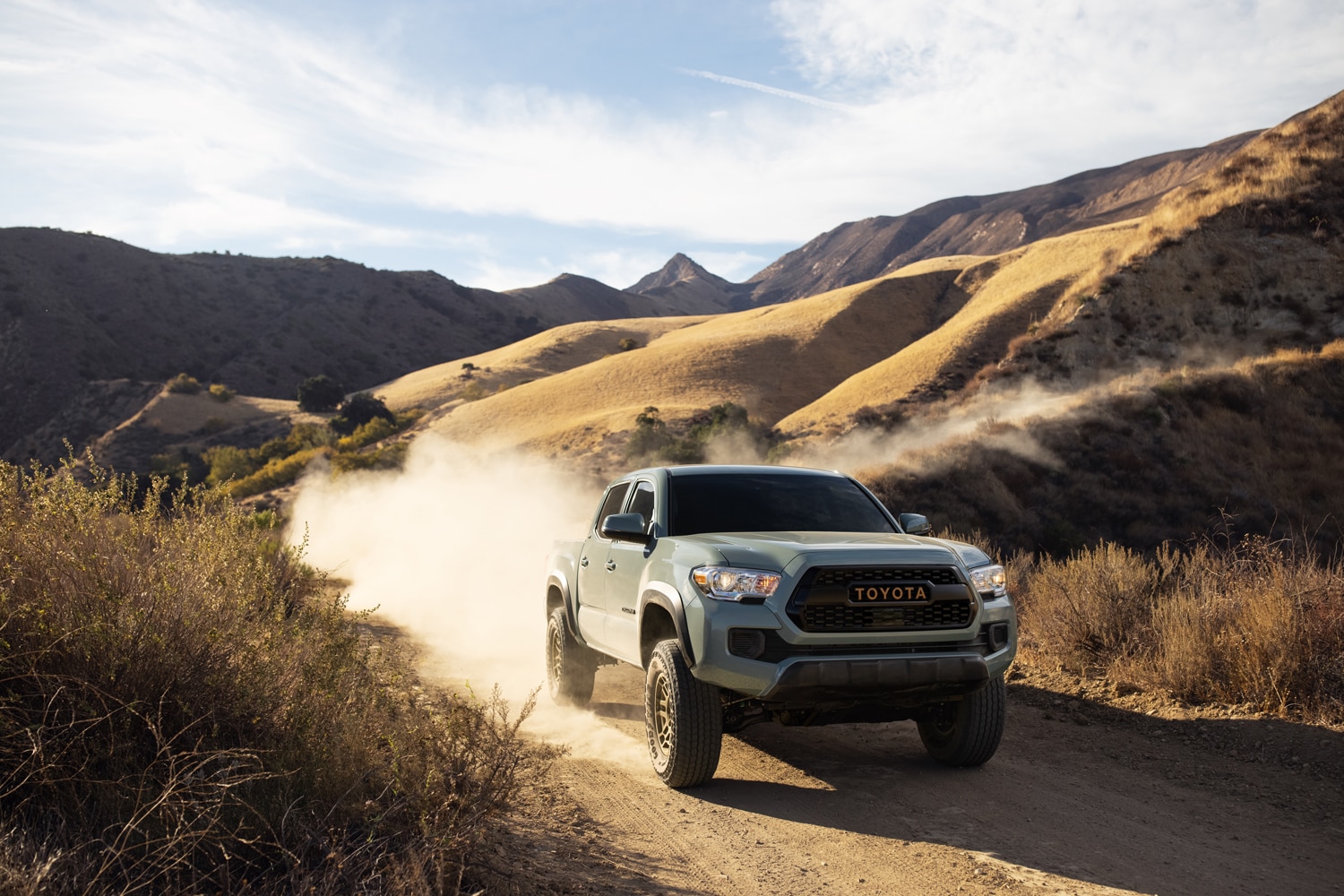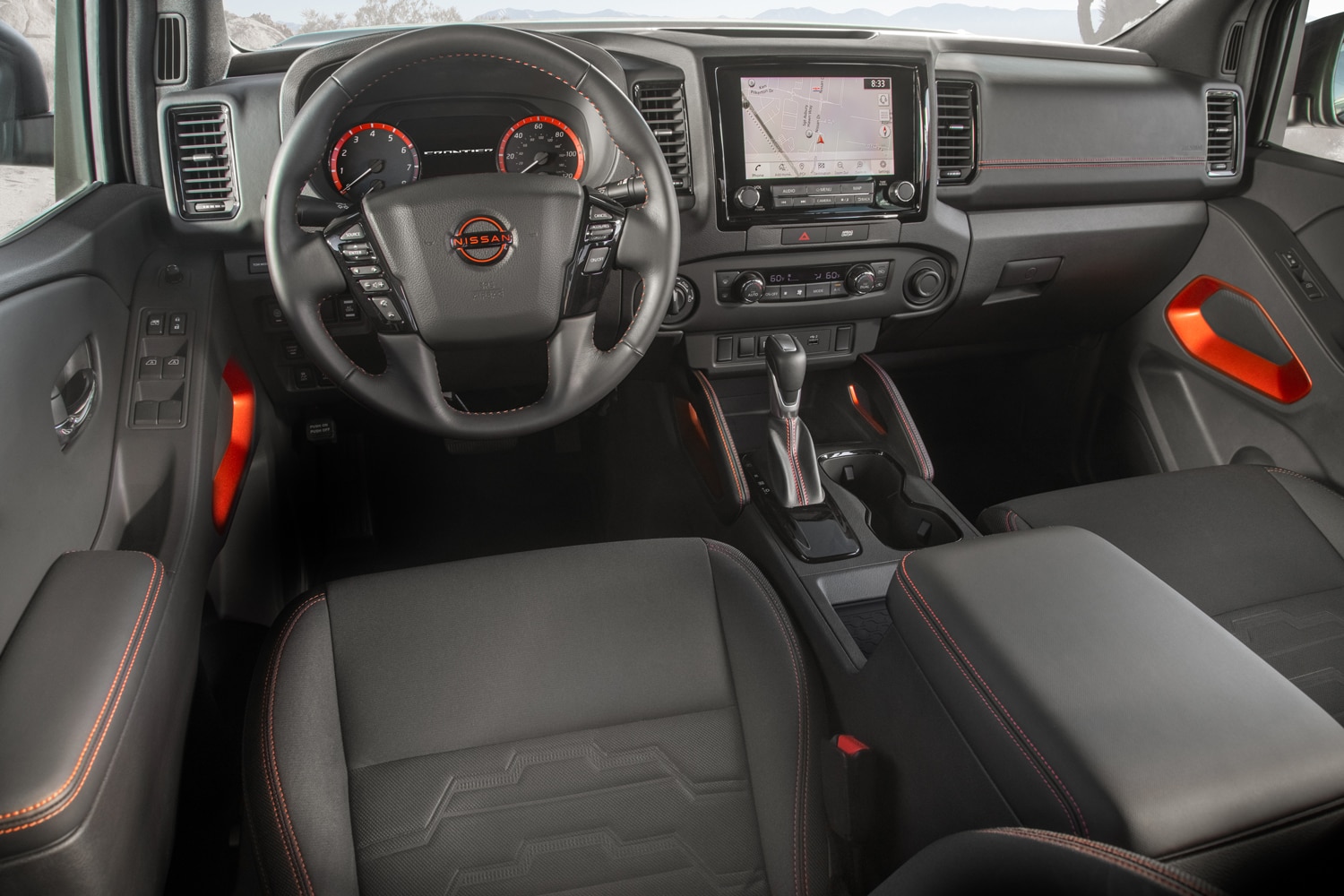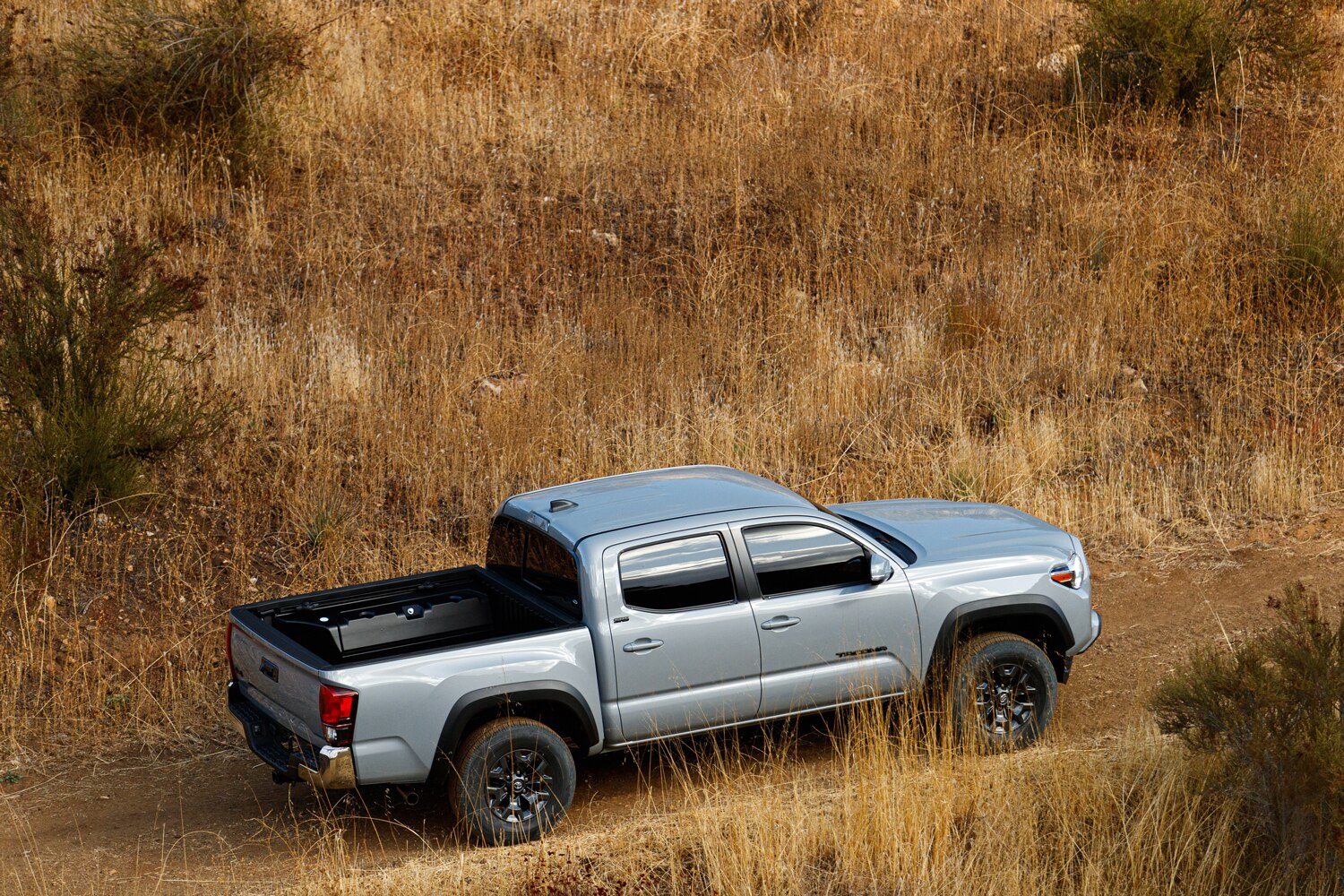Compared: 2022 Toyota Tacoma vs. 2022 Nissan Frontier
When redesigning its mid-size pickup, Nissan more or less copied Toyota but provided fewer options.
 Toyota/Nissan
Toyota/Nissan
Article QuickTakes
The Toyota Tacoma dominates the mid-size-pickup market, racking up more than a quarter-million sales in 2021. The truck’s faithful lovingly refer to it as the Taco and adore its reliability, utilitarian performance, and off-road prowess, even if it falls short on interior comfort, drivetrain refinement, and ride quality. Its success has had a big influence on other automakers. For 2022, after 17 odd years of neglect, Nissan finally overhauled the Frontier, which sold only 60,000 examples last year. It borrowed so heavily from Toyota’s playbook that prospective truck buyers may need to squint to spot the differences between these two. Or they can just read this:
 Toyota
Toyota
Toyota Tacoma vs Nissan Frontier: Price
The Tacoma starts at $27,915, or $1,650 less than the Frontier. On the bottom four trim levels (SR, SR5, TRD Sport, and TRD Off-Road), shoppers can choose between the extended Access cab (with rear half-doors) and the larger crew cab (with four full-size doors). The well-equipped Limited and TRD Pro come exclusively in the latter form. Toyota pairs every Access cab with a six-foot bed and gives buyers the choice of a five- or six-foot box on all crew-cab models apart from the TRD Pro, which defaults to a five-footer.
The Toyota comes standard with a lackluster 159-hp four-cylinder engine that buyers should steer clear of. Instead, if you can come up with at least $30,175, we recommend upgrading to the spicier 278-hp V6. If you’re comfortable driving a manual transmission—available only with the V6—it’s a smart choice, as the Tacoma’s standard automatic has to hunt for the right gear. The cheapest way to get this powertrain is with the $36,600 TRD Sport 4x4.
 Nissan
Nissan
The Frontier opens at $29,565, and a 310-hp V6 powers every model. You won’t find a manual transmission in this lineup, but as far as automatics go, the Frontier’s modern nine-speed has the upper hand over the Tacoma’s six-speed. Buyers can spec the bottom two trims (S and SV) with an extended or crew cab; choosing the top Pro-X/Pro-4X automatically selects the larger cabin. Bed size stretches to five feet in most configurations, but you can get a six-foot box on the midlevel SV.
Both trucks offer a choice of rear- or four-wheel drive on most trims.
 Toyota
Toyota
Toyota Tacoma vs Nissan Frontier: Features
Only the Tacoma comes standard with lane-departure warning, automatic high-beams, and adaptive cruise control, though you can option these things on any Frontier. The Nissan lacks a telescoping steering column but has larger gauge-cluster and infotainment screens than the Tacoma and standard push-button start. It also has something the Toyota doesn’t offer: driver-attention monitoring.
 Nissan
Nissan
All Tacomas feature a composite bed surface that Toyota claims has greater impact strength than steel. The Nissan, which has a steel box, offers a spray-on bedliner at an extra cost. Additionally, the Toyota arrives with a standard Class IV towing hitch receiver, something Frontier buyers also have to pay more for.
 Toyota
Toyota
Toyota Tacoma vs Nissan Frontier: Fuel Economy
Regardless of powertrain, neither of these vehicles is terribly efficient. If you thought the Tacoma’s underpowered four-cylinder would have the edge on fuel economy, think again. Two-wheel-drive trucks with that engine see 20 mpg in the city and 23 mpg on the highway. (Knock off 1 mpg, respectively, for 4WD models.)
Opt for the Tacoma’s V6 and you’re looking at essentially the same numbers: The city rating drops by one or two points, depending on how many wheels are in play, but on the highway, the six-cylinder Toyota performs as well as or even a little better than the four, returning up to 24 mpg. That’s with the automatic, of course. Rowing your own gears in the Toyota takes its toll on fuel economy. The best a manual-equipped Tacoma can do is 17 mpg city and 21 highway.
 Nissan
Nissan
The Frontier, meanwhile, averages 18 mpg in the city and 24 mpg on the highway with RWD and 17 and 22 with 4WD—on par with the Tacoma’s numbers.



